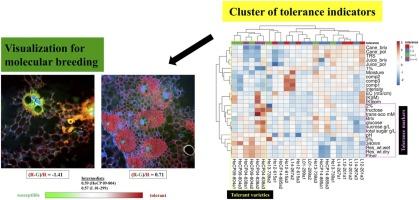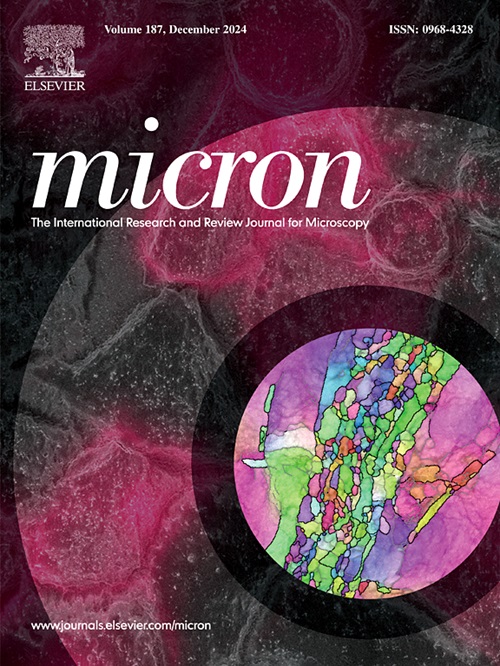甘蔗(蔗属)杂交种的抗冻指标
IF 2.5
3区 工程技术
Q1 MICROSCOPY
引用次数: 0
摘要
美国南部最近发生的一系列极端天气事件(2022 年冬季冰冻,随后是 2023 年夏季干旱)要求进行定量标记,以加快推出气候适应性强的甘蔗品种。聚类分析揭示了包括荧光氨基酸在内的潜在冻害标记。在调查的 8 个甘蔗品种中,耐寒品种 HoCP 04-838 受冻害造成的茎秆断裂率降低了 3-5 倍;纤维含量最高;颗粒果汁分解副产物最少(p<0.05)。根据这些观察结果,在甘蔗的纤维成分中开发了荧光细胞标记来评估耐寒性。荧光显微镜在 HoCP 04-838 维管束周围的木质素细胞中观察到一组标记,其远红发射范围属于脂质和其他疏水成分。使用荧光纳米粒子可使标记物的细胞分布清晰可见,这种纳米粒子的设计目的是提高细胞吸收和在更宽波长下成像。与育种计划中目前使用的冻害后评估相比,所开发的化学表型方法具有优势,因为目前还没有甘蔗耐寒性的遗传标记。本文章由计算机程序翻译,如有差异,请以英文原文为准。

Freeze response indicators in sugarcane (Saccharum spp. hybrids)
A recent series of extreme weather events in Southern U.S. (2022 winter freeze followed by 2023 summer drought) calls for quantitative markers to expedite the release of climate resilient sugarcane varieties. A cluster analysis revealed potential markers for freeze damage including fluorescent amino acids. Of 8 cultivars investigated, tolerant variety HoCP 04–838 sustained 3–5 fold lower stalk fracture from the freeze; contained among the highest fiber; and maintained the lowest particulate juice decomposition byproducts (p<0.05). Based on those observations, fluorescence cellular markers were developed in fiber components of sugarcane to assess cold tolerance. Fluorescence microscopy visualized a cluster of markers in lignin cells around the vascular bundles of HoCP 04–838, within the far-red emission ranges attributable to lipids and other hydrophobic components. Cellular distributions of markers were made visible using fluorescent nanoparticles designed to enhance cellular uptake and imaging at wider wavelengths. Developed chemical phenotyping approaches offer advantages over post-freeze damage assessment currently used in the breeding program, as no genetic marker exists for cold tolerance of sugarcane.
求助全文
通过发布文献求助,成功后即可免费获取论文全文。
去求助
来源期刊

Micron
工程技术-显微镜技术
CiteScore
4.30
自引率
4.20%
发文量
100
审稿时长
31 days
期刊介绍:
Micron is an interdisciplinary forum for all work that involves new applications of microscopy or where advanced microscopy plays a central role. The journal will publish on the design, methods, application, practice or theory of microscopy and microanalysis, including reports on optical, electron-beam, X-ray microtomography, and scanning-probe systems. It also aims at the regular publication of review papers, short communications, as well as thematic issues on contemporary developments in microscopy and microanalysis. The journal embraces original research in which microscopy has contributed significantly to knowledge in biology, life science, nanoscience and nanotechnology, materials science and engineering.
 求助内容:
求助内容: 应助结果提醒方式:
应助结果提醒方式:


